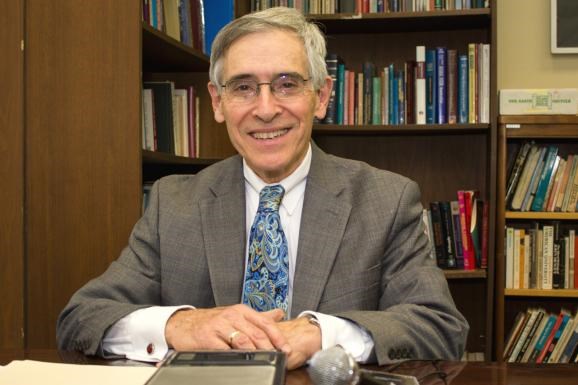SooToday had long wondered if there may be some connection between our border city and the Underground Railroad and so, for Black History Month, we tracked down someone who has written on the topic to fill us in.
Dr. Russell Magnaghi, a now retired professor who spent 45 years in the History Department at Northern Michigan University, and whose specialties include the History of the Upper Peninsula (UP), Michigan, and border area said that, while researching the history the Upper Peninsula’s black population, he may have found a connection.
The underground railroad was not really a railroad but a clandestine series of routes and safe houses travelling north, used by escaped black slaves living in the southern ‘slave states’ looking to find freedom in the Northern United States and Canada.
Magnaghi said he has uncovered evidence indicating that some of these black refugees travelled to the Upper Peninsula and lived in Sault Ste. Marie, Michigan and possibly Sault, Ontario during the peak of its use in the mid 19th Century.
While conducting research on the history of the UP’s black population Magnaghi discovered some interesting information.
“I started looking at the 1860 census and I began to seeing these names that were marked ‘b’ for black beside their name. It said they were born in the south - places like Kentucky, Louisiana, and Virginia. It began to dawn on me that these people must have come up through the underground railroad,” said Magnaghi.
Magnaghi said that in 1850 the Fugitive Slave Law was passed in the United States which put pressure on police to arrest suspected slaves, fined people for harbouring slaves, and spawned a wave of slave-hunters who would not only capture escaped slaves but sometimes abduct freed black persons who had no means to legally defend themselves.
Magnaghi said that because of the intensified risk of being captured during that time, people began to use the underground network to travel further north and it is probably why some black persons were attracted to the Upper Peninsula, which was sort of a hiding spot for them.
While most slaves that escaped as far north as Canada settled in Windsor and other places in southern Ontario, Magnaghi said there may have been some attracted to the UP because it wasn’t easily accessible by slave hunters and it was still in the United States.
Magnaghi was further convinced that the UP’s 1860 black population included many who had escaped because, despite a steadily rising UP general population, the 1870 census had a small black population - after the end of slavery.
In the 1860 census, the UP black population was 178 and in 1870 it went down to 145.
Magnaghi said many of these people would have had no love for their home states and so likely went to live in the areas near Detroit where there were larger black communities, more opportunities, and a “less hostile climate”.
During those times, Northern Michigan was considered an untamed frontier and travelling by land through its forested landscape was quite difficult and during the winter months, said Magnaghi, basically wasn’t done at all.
To get to the UP, escaped slaves would have most likely travelled like everyone else, by boat.
“Many of them probably stowed away on ships getting help from black crew hands or even worked for passage and it would have been very risky,” said Magnaghi.
Since Sault Ste. Marie was an active hub or gateway for ships passing through the Great Lakes it is quite possible many of the escaped Slaves stopped or travelled through here to get somewhere else.
Magnaghi’s research did find at least three probable escaped slaves living in Sault Ste. Marie, Michigan.
Donald Hatch, 45, George Smith, 40, and John Smith, 15 were all Virginia-born black persons included in the 1860 census and listed as living in Sault Ste. Marie, Mi.
Magnaghi said these people likely frequented the Canadian Sault since the border was far less guarded during the nineteenth century.
“In general, the two Saults were interactive in the 19th Century and the division was far less than it is now,” he said.
George Smith was listed as being a barber while the other two were listed as porters.
Magnaghi said the service industry was the largest sector of employment for refugee black Americans during the period and, because of their role in filling service jobs, they were likely very welcomed by locals.
So, in summary, it seems that the Sault wasn’t a major place in the history of the underground railroad but that, very likely, we did have some freed slaves come through here from time to time.
